
Introduction
The B2B marketing landscape is resetting in 2022. After surviving the pandemic, both consumers’ and businesses’ ideologies and behaviors have dramatically changed.
Customers today are looking for more value-driven products and services. They no longer wish to buy on a whim. According to an IBM study in 2020, 41% of all consumers want good value and convenience from brands.
Similarly, COVID-19 has affected businesses spending power a lot. As per the Gartner CMO Spend Survey, marketers’ budgets have dropped to the lowest level in history today.
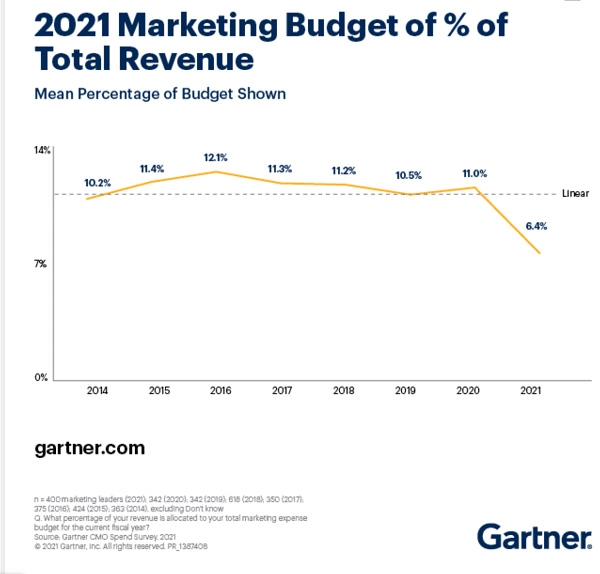
Source: marketing-budgets-drop-to-lowest-levels
So, that means customers want more value, and businesses desire to save their resources in 2022. Sounds simple, but in an already challenging B2B marketing space, adjusting to the new trends isn’t going to be that easy.
But, you can make it easy, B2B marketers! You see, folks, top 8 demand marketing trends are what you need to follow in 2022 to generate more leads and revenue.
Wondering what demand marketing is and which demand marketing trends you should follow in the coming years? Then, just scroll down, and let’s learn everything about demand marketing and its prevailing trends.
What’s Demand Marketing?
Demand marketing is basically a process used by marketers to excite people about a new product or brand. Boosting brand awareness and spiking user’s interest are the two main demand marketing focal points.
This marketing approach is the future of B2B marketing because:
- It empowers multiple marketing efforts, including building awareness, supporting validation, mitigating customer evaluation,
- Secondly, it is a holistic approach that streamlines sales processes with marketing efforts.
In short, the pathway to B2B lead generation goes through demand generation and marketing in 2022. So, you better familiarise yourself with the top demand marketing trends before your competitors.
Top 8 Demand Marketing Trends in 2023
- Intent-Based Data Will Drive Marketing
- Marketing Automation Is a Thing Now
- Content Needs To Be Simpler
- Video Marketing Will Take the Front Seat
- Personalized Account-Based Marketing
- Build Your Own Audience
- Build Your Brand Identity
- Tell A Story, Not a Sales Pitch
Demand marketing is a direct marketing approach based on your audience. The success of demand-based marketing depends upon how much you know your customers and how you deliver better value to them?
It might sound a bit of a hard task, but if you follow these marketing trends in 2022, you can easily future-ready your business.
1. Intent-Based Data Will Drive Marketing
Recently, Google has strengthened its privacy and tracking norms and even announced to end cookie tracking by the end of 2022.
Now, this is a great step from a customer’s perspective as they will get more privacy, but for marketers, it will raise some issues. Since tracking and monitoring help marketers to understand buyer’s intent, this will make it hard for marketers to know their customers in the coming days.
However, many marketers are already using third-party cookies and trackers, but Google’s strict privacy will make that harder too. So, what will demand marketers do in 2022?
Simple, they will focus on first-party intent data. This data is a collection of information about the consumer’s online journey. In a way, it is direct data from the consumer to a brand via survey, online search, gamification, etc.
Since 81% of shoppers search online before buying a product, here’s first-party data will help you a lot in creating and generating demand in 2022.
Additionally, first-party data help B2B marketers to:
-
-
- Gauge a potential lead’s intent and position in the purchase cycle.
- Personalize marketing campaigns to harness account-based marketing.
- Understand the touchpoints that can encourage customers to make a purchase.
- It helps to build trust and engagement among your potential accounts, etc.
-
2. Marketing Automation Is a Thing Now
Intent data-based marketing will increase the volume of data dramatically across the marketing funnel. Thus, automated marketing workflow is the only way to make demand marketing effective and efficient in 2022.
One shoe fits all approach will no longer work in marketing. Thanks to brands like Amazon, customers’ expectations for personalized experiences have grown multi-folds. According to a McKinsey survey, 80% of respondents want personalization from retailers.
That means B2B marketers have to map individual lead’s journeys and design marketing funnels accordingly. And to do this mammoth operation, automation is the only way.
Well, marketing automation just means using software to automate your marketing workflow. Marketing teams use different tools to automate various activities such as social media posting, analyzing ad campaigns, and so much more.
Today, the software is used to automate numerous marketing operations, such as:
-
-
- Lead nurturing tools help with sending onboard emails to educate new leads and learn about their problems.
- Behavior-driven software allows you to understand your lead’s online behavior like keywords they search or websites they visited.
- Social media automation tools facilitate scheduling your posts in advance, analyze performance metrics, and more.
- Many marketing programs help you salvage the abandoned cart and retarget your potential leads.
- A/B testing programs to understand what will and will not work before creating a campaign.
-
3. Content Needs To Be Simpler
Those days are long gone when content used to be content king. In 2022, the content will be simple yet powerful. It’s not that content won’t work in the future; it’s just that content marketing dimensions will change.
You see people, almost 91% of B2B marketers are using content marketing currently. But unfortunately, none of them is trying something new.
Most B2B blogs or social media posts are sales-driven. Marketers are just telling what their products can do, but they are not focusing on what customers want. And, since demand marketing is all about user’s preferences rather than advertising, therefore, the B2B content marketing landscape will shift towards simplicity and information in 2022.
In fact, many B2B companies have already adopted the new content marketing route. For example, instead of taking classic blog posts or infographic content presentation methods, Cisco used comics to talk about internet safety.
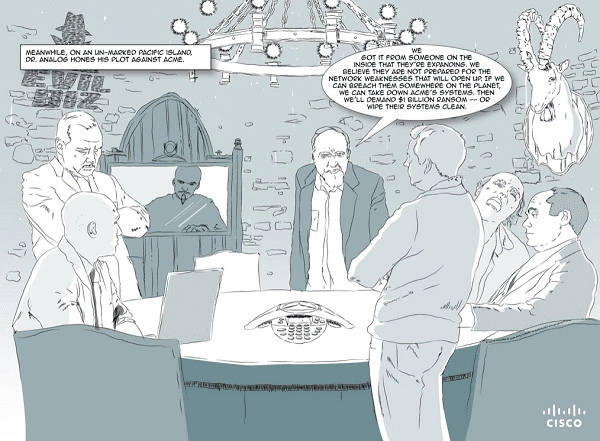
Source:Content Needs To Be Simpler
Here Cisco showed that complex topics like internet safety could be simply explained with visual content. It’s just a matter of finding a creative yet simple way to present content.
Therefore, content marketing strategies like content syndication, repurposing, and visualization will become prominent in 2022. So, you better start reanalyzing your content marketing strategies today!
4. Video Marketing Will Take the Front Seat
If the content is getting refurbished in 2022, B2B video marketing isn’t standing behind. Video marketing has been a hot marketing topic for a few years now. But based on the Wyzowl 2021 video marketing report—
-
-
- 89% of marketers say video marketing offers a better ROI
- 87% of them say video helps with lead generation.
- 95% of video marketers plan to increase their spending on video marketing.
-
On the other hand, if you look at the Content Marketing Institute’s findings, 71% of B2B marketers and 66% of B2C marketers are already using video marketing.
So, B2B video marketing isn’t a new trend, but it will be more prominent and entertaining in the coming days. In the coming days, video marketers will produce more informative, engaging, and entertaining content.
For example, SEMRush has just explained in 1 minute how people can boost website performance with the SEMRush Site Audit tool. Using a simple layout and engaging graphics, they provided value to their customers. And this is exactly what you should do to boost your demand marketing in 2022.
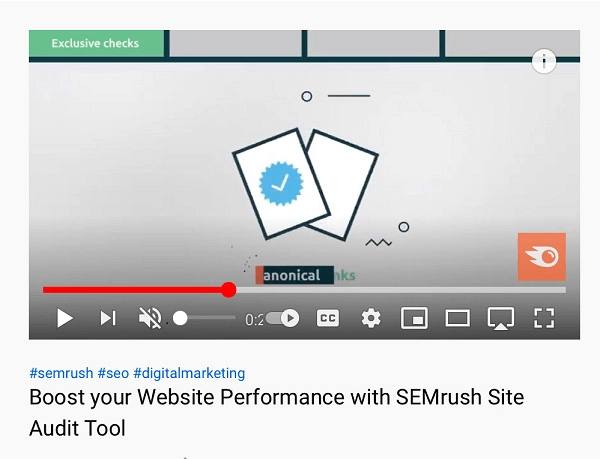
5. Personalized Account-Based Marketing
As we have already discussed above, personalized marketing is what customers want today. And, in many ways, B2B marketers have already infused personalized marketing into their plans.
However, in 2022, things will go beyond personalized marketing as account-based marketing will gain more momentum. ABM is a key account marketing based on account awareness in which companies interact with individual prospects.
ABM offers better insight and results to B2B companies. This is a flip of the traditional marketing funnel where higher to lower leads are targeted. But ABM focuses on a set of roles to determine prospects’ value.
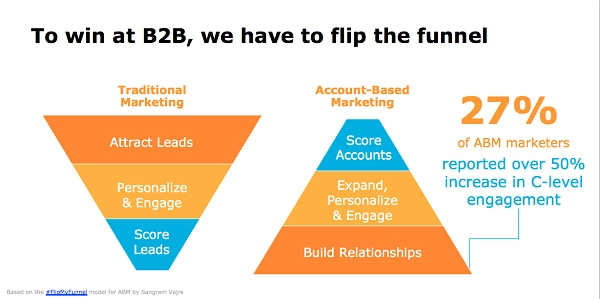
Source: Content Marketing Institute
Like demand marketing, sales and marketing teams also work together in ABM to build a potential lead’s persona. Therefore, it is a more resilient and personalized way to target your audience’s needs and interests.
It is forecasted that ABM’s market size will rise at a CAGR of 13.53% between 2019-2025. In fact, many companies have already adopted ABM, such as Evergage, HubSpot, Triblio, Celsius, Drift, and many others.
6. Build Your Own Audience
If you are wondering that you already have millions of followers on Twitter, Instagram, or Facebook, you are all sorted in 2022. Well, you are wrong here. Why?
That’s because people your audience is owned by Twitter, Instagram, Facebook, or any other social media networks. You have no control or access over your audience. Imagine if Instagram shut down today or got hacked, you would lose your entire audience in a minute.
Here you can take a TikTok ban in India, for instance. Alone in India, 600 million active TikTok users vanished with one government ban.
So, when you say you have 1 million followers on Instagram, remember it’s Instagram’s audience, not yours. That’s why now you need to start building your own audience.
The simplest way to build your own audience is to create an email list. This way, you can directly reach your audience inbox. Also, you can develop your business community via mobile apps and web portals.
B2B marketers, to survive in data-based marketing, it is important to build your own audience database — it doesn’t matter how you do it.
7. Build Your Brand Identity
This is an ancient demand marketing trend, but it never goes outdated. Brand image is always important for businesses to generate leads and revenue.
The main reason to focus on brand identity in 2022 is that digital advertising will become more expensive in the coming days. In fact, the cost of running ads on Google is getting expensive day by day. In many industries, Google even uses bidding to fix charges.
So here, building your brand image is a highly cost-effective and result-driven marketing strategy for you. However, organic brand building also isn’t that easy; it requires proper strategy and time to nurture.
To build your B2B brand image, you have to work on:
-
-
- Identify your brand value, offering an ideology
- Run a complete SWOT analysis on your brand’s market position
- Recognize your customers
- Build your brand’s mission and value
- Try different brand tones and analyze which one your audience prefers the better
- Your brand voice has to be fun, engaging, and relatable
- Maintain a consistent brand image across all your marketing channels, etc.
-
8. Tell A Story, Not a Sales Pitch
One of the biggest mistakes that B2B marketers make is they just focus on promoting their products. They use all the flowery and powerful words to promote their words, but they forget to establish a connection with their audience.
Your audience doesn’t want to know how great your product is. They are more interested in knowing how your product can help them.
And that’s what stories do. They help you connect with your customers and show them how you can make their life better. Plus, stories have emotional value in them, which people can easily grasp and understand.
Let’s take an example to better understand B2B marketing stories. Intuit, a software development company, has created an animated love story to promote its products.
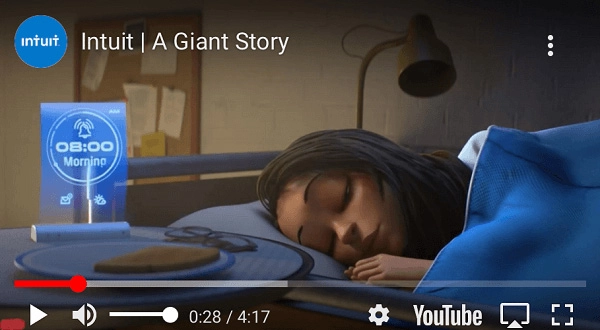
Source: Intuit
The short video ad shows a young inventor who creates a robot to help her florist friend to grow his business. They humanize their product by creating a cute and inspirational story.
So, in 2022, put on your storyteller hat and better connect with your audience.
Demand Marketing in 2022 — Reshaping B2B Space
Definitely, demand marketing in 2022 is all set to change B2B space. B2B marketing will be more personal, data-driven, creative, and visual-oriented tomorrow.
Those days are leaving behind when a simple ‘We sell the best products’ taglines would have generated leads. Now, you have to know your customers, connect with them, and then, even think about selling them.
If you adopt all these demand marketing trends today, you can make your 2022 more profitable and prosperous tomorrow. So, let’s not wait any longer and start following 8 powerful marketing trends now.
Our blog
Latest blog posts
Tool and strategies modern teams need to help their companies grow.

This comprehensive guide covers everything about service marketing—its unique chara...

Believe it or not, the concept of content sharing existed long before the Internet. I...

Sales analysis is essential to avoid inaccurate forecasts and identify improvement op...




